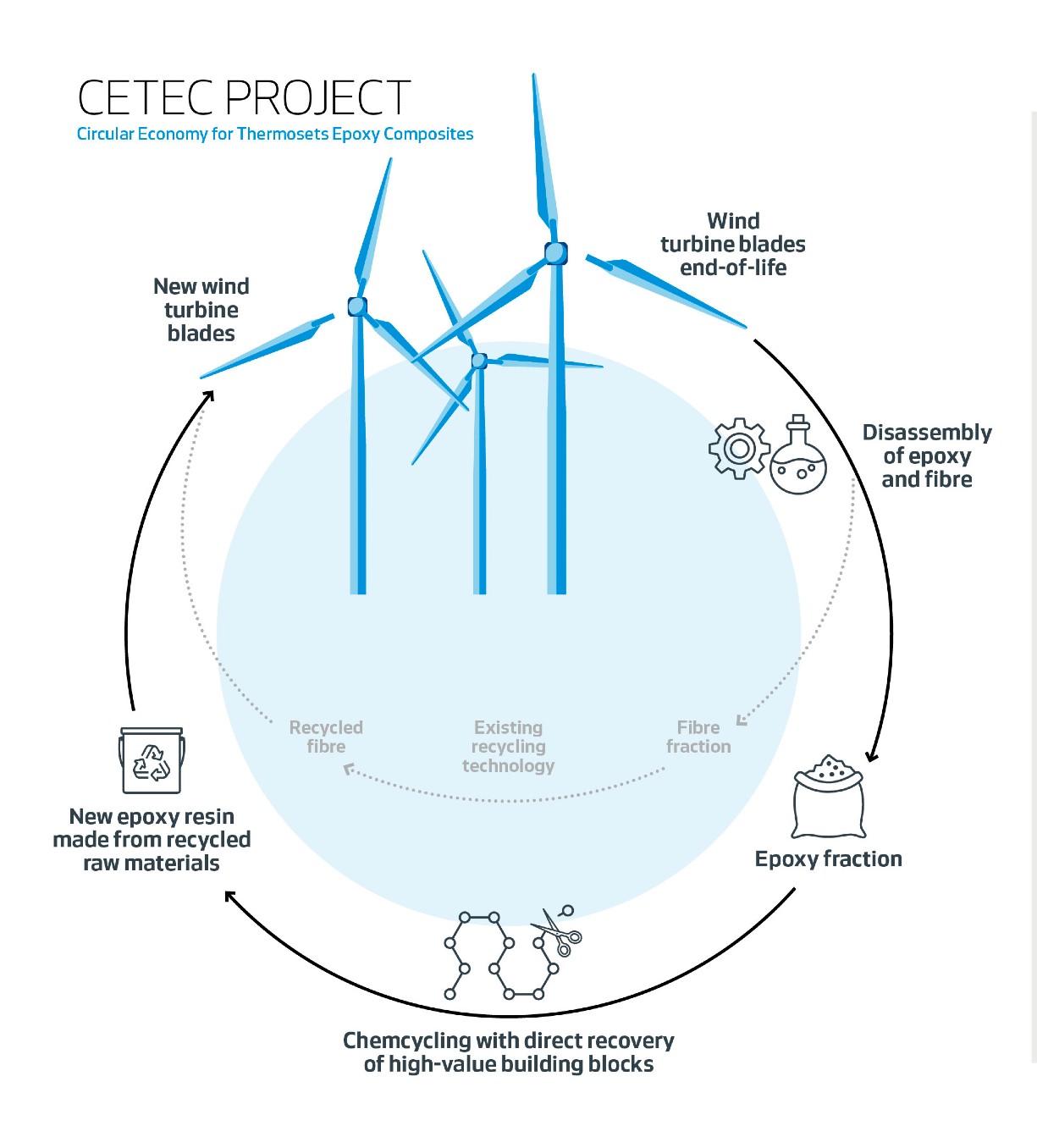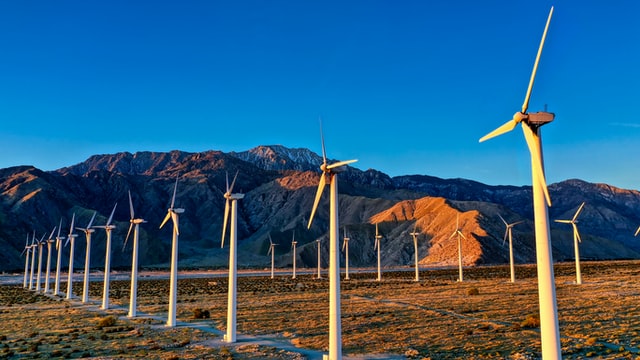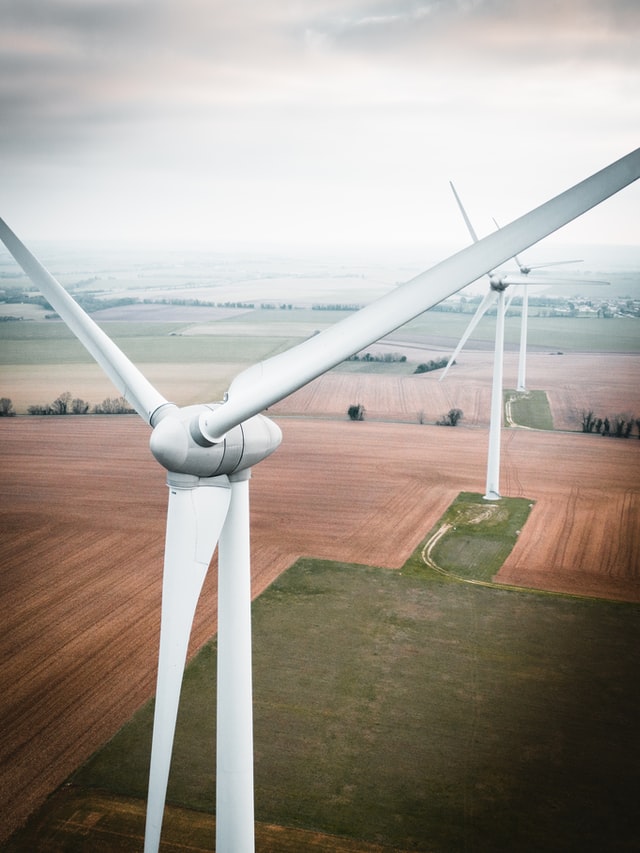
- Sustainable Planet -
- 6mins -
- 815 views
Wind-power giant says it can now fully recycle turbine blades and stop dumping
Danish wind turbine manufacturer Vestas has announced that it has figured out how to fully recycle wind turbine blades and spare them from landfill.
New technology Fully recycles wind turbine blades
A coalition of industry and academic leaders spearheaded by Danish wind turbine manufacturing giant Vestas has developed a new technology they say will be the final technology step towards a fully recyclable wind turbine value chain.

The full recycling cycle of turbine blades involves splitting and recycling both fibre and epoxy
Danish wind turbine giant Vestas announced this week that it, along with a coalition of industry and academic leaders, has developed a process to fully recycle wind turbine blades.
In April, Electrek, the news and commentary site that tracks, analyses, and reports news on the transition from fossil-fuel transport to electric transport, reported that the University of Strathclyde in Glasgow and Norwegian offshore wind developer Aker Offshore Wind had worked out how to recycle glass-reinforced polymer composites (GRP) used in wind turbine blades:
Strathclyde’s Department of Mechanical and Aerospace Engineering developed a solution for thermal recovery and post-treatment process of glass fibers from GRP composites scrap to achieve near-virgin-quality glass fibres.
Now Vestas, along with Olin, an epoxy producer, the Danish Technological Institute, and Aarhus University in Denmark claims to have achieved a full recycling cycle of turbine blades by splitting and recycling both fibre and epoxy:
A coalition of industry and academic leaders have developed a new technology to enable circularity for thermoset composites, the material used to make wind turbine blades. The new technology delivers the final technological step on the journey toward a fully recyclable wind turbine value chain. To enable the adoption of this new technology, and to advance a circular economy across the wind industry, a new initiative entitled CETEC (Circular Economy for Thermosets Epoxy Composites) has been established. Within three years, CETEC is aiming to present a fully scoped solution ready for industrial adoption, based on commercialisation of the novel circularity technology.
Source: Elektrek

The problem with wind turbine blades once retired
A wind turbine’s blades can be longer than a Boeing 747 wing, so at the end of their lifespan they can’t just be hauled away. First, you need to saw through the fibreglass using a diamond-encrusted industrial saw to create three pieces small enough to be strapped to a tractor-trailer.
According to a recent report by Bloomberg Green, tens of thousands of aging blades are coming down from steel towers around the world and most have nowhere to go but landfills. In the U.S. alone, about 8,000 will be removed in each of the next four years.
Europe, which has been dealing with the problem longer, has about 3,800 coming down annually through at least 2022, according to BloombergNEF. It’s going to get worse: Most were built more than a decade ago, when installations were less than a fifth of what they are now.
Built to withstand hurricane-force winds, the blades can’t easily be crushed, recycled or repurposed.
Wind power is carbon-free and about 85% of turbine components, including steel, copper wire, electronics and gearing can be recycled or reused. But the fiberglass blades remain difficult to dispose of. With some as long as a football field, big rigs can only carry one at a time, making transportation costs prohibitive for long-distance hauls.
In the European Union, which strictly regulates material that can go into landfills, some blades are burned in kilns that create cement or in power plants. But their energy content is weak and uneven and the burning fiberglass emits pollutants.
Source: Bloomberg

Towards a future where landfill is no longer required in blade decommissioning
In an effort to foster the adoption of this new technology throughout the wind turbine industry, Vestas announced on Monday (18 May) the launch of the Circular Economy for Thermosets Epoxy Composites (CETEC) initiative.
It is partly funded by Innovation Fund Denmark (IFD), and involves both industrial and academic leaders including Olin, the world leading producer of Epoxy, the Danish Technological Institute (DTI), and Aarhus University.
“As global commitments to a net-zero future increase, it’s absolutely crucial to ensure the wind industry can scale sustainably, which includes Vestas fulfilling our ambition to produce zero-waste turbines by 2040,” said Allan Korsgaard Poulsen, the head of sustainability and advanced materials at Vestas.
“Leveraging this new technological breakthrough in chemcycling epoxy resin, the CETEC project will be a significant milestone in Vestas’ journey towards achieving this goal, and in enabling a future where landfill is no longer required in blade decommissioning.”
Source: RenewEconomy.com.au

thermoset composites in turbine blades could not previously be recycled
Developed by DreamWind – a research project in collaboration between Aarhus University, Danish Technological Institute, and Vestas – the new technology consists of two-step process in which thermoset composites are disassembled into fibre and epoxy, before being put through a chemcycling process which breaks the epoxy into further base components similar to virgin materials.
The resulting materials from the two-step process can subsequently be reintroduced into the manufacturing of new wind turbine blades.
Already 85-90% recyclable, wind turbine blade material was the remaining problem child of a fully recyclable wind turbine value chain, due to the fact that thermoset composites could not previously be recycled.
“The key characteristic of composite materials is their unique combination of low weight and high strength,” said Simon Frølich, from the Danish Technological Institute.
“This is governed by the strong bonding of two different materials – fibre and epoxy. The dilemma is that this strong bond is also the feature that renders these materials difficult to recycle.
“Therefore, the development of CETEC’s novel technology, enabling disassembly of the composite at end-of-life, is a gamechanger, that will allow us to capture the value represented by each material stream in a new circular value chain.”
The potential commercial value of a fully recyclable value chain could help to expand manufacturing capacity globally, allowing the industry to move into markets where regulation around waste management for manufacturing industries is tightening.
CETEC’s thermoset composite recycling technology will also likely be introduced to other industries that rely on thermoset composite in production – such as the automotive and aviation sectors – but Vestas warned this would only happen once the technology is fully developed.
Source: RenewEconomy.com.au

